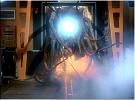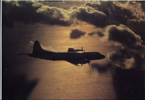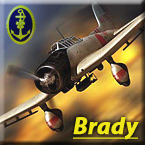ChezDaJez
Posts: 3436
Joined: 11/12/2004
From: Chehalis, WA
Status: offline

|
quote:
A couple of items for thought concerning differences in Japanese and US pilot training:
All statements after this line in my post are my conclusions, based on my references and my research. I used Bergerud's in support of them but also many other resources, especially the USSBS interrogations of Japanese officers.
quote:
Some men were rotated back to training duties, not on the scale the Allies did but it did hapen, also depelated units were used to form New Units, prety much all New build Japanese Air units had a small core of experanced men in them as a base.
The Japanese did not employ a rotation policy for the purpose of training new pilots. They did attempt to use pilots no longer capable of combat but their numbers were very small and had little impact on the quality of the training. Pilots from depleted units were not used as instructors. They were placed in replacement units while awaiting new aircraft and new pilots but were most definitely not assigned to instructor duty. In fact, surviving pilots arriving back in Japan after the Battle of Midway were kept onboard ship or restricted to hospitals because the Japanese command did not want the population to find out about their defeat. Fuchida complained bitterly about this in his book, "God's Samurai". Once these survivors received new aircraft and more pilots, they were sent to the Rabaul theater without any leave.
quote:
Also not one mention is made of Civialan piolets, not to say it is not true, but I think he is over emphising, after reading his book and comparing it to Books on Japanese navy traing their are many similaritys, in the basics.
This is my statement supported by several books and personal websites. The following quote is from a book written by flight student, Franklyn E. Daly, Jr. who went through flight training at NAS Ottumwa, Iowa.
quote:
The military pilot cadre from World War I that chose to go into reserve components or completely back to civilian life was the root strength of the early World War II aviation instruction programs in the United States. Many of these aviators had already furnished the backbone for a program of civil pilot training in the United States known as Civilian Pilot Training (CPT). CPT began at Fayetteville, Arkansas in 1939 and was the most ambitious program undertaken in any nation to prepare its citizens for the aviation era. A significant number of the primary flight instructors that I encountered in 1944 and 1945 had had their own introduction to aviation in CPT. Student pilots in the 1940s most often encountered a second pilot-generation of U.S. civil aviation pilots as their instructors.
quote:
"Thereafter, the IJNAF was no longer a cohesive, skilled force"
This not even corect at all, Okinawa should be evidance enough of this.
I should have been more specific on this. I meant to say the IJNAF assigned to carrier duty was no longer a skilled, cohesive force. Some supporting data:
USSBS interrogation: Rear Admiral TAKATA, Toshitane,IJN; attached successively to the Staff of the Third Fleet, the Combined Fleet, and the Naval General Staff.
Quote:
Q. Do you think the combat experience of your carrier pilots was maintained throughout the period 1943-1944, or did the combat calibre and experience decline?
A. The skill of the pilots was normal, but they lacked experience because they were on the defense.
Q. Was this lack of skill and experience the result of lack of time for training or reduction in the standards of training?
A. There was insufficient time for proper training.
Q. In the battle west of the MARIANAS, it is thought that you lost practically all of your carrier pilot strength. Was that correct?
A. It was almost a total loss.
Q. At that period in the middle of 1944, were there other carrier air groups in training?
A. They were almost unable to train any ship-based pilots.
Q. Was the Naval air training establishment or organization able to keep up with the demand for pilot training throughout the war?
A. They could not very well meet the demands.
Unquote
quote:
This is prety silly realy, most US Piolets and indead service men in general dident grow up on the Farm, most had never fired a weapon in their life. Both services had from what I can tell in comparing my referances good gunery practice.
The majority of Americans prior to WWII, lived in rural communities and were generally well versed in handling firearms. Take a look at the biographies of the top 50 American aces. You will find that the majority were good hunters. The average Japanese pilot had never fired a firearm prior to his military service.
quote:
"The Japanese pilots were taught that the manuverability of their aircraft would allow them to gain an advantageous firing position from dead astern and this was true"
This was from one mans prespective and do largely to the plane type he wass fighting at the time,The A6M2 primary Killing weapon was the 20 mm Type 99 MK I, with 60 rpg and a low MV, to inshure good hits the Zeros neaded to get close, and their planes could easly do this given the advantages over the wildcat.
The ballistic mismatch between the 20mm and 7.7 mm weapons on the Zero meant that they could not bring all of their weapons to bear during a deflection shot so they were taught to maneuver and attack from behind. They were never taught how to engage specific allied aircraft. That had to be learned on the job. The point of my statement was that they did not provide training in deflection shooting due to their tactical doctrine and weapons ballistics. US tactical doctrine emphasized deflection shooting. I would think that Thatch's statement bears recognition as he was often their target. Some Japanese pilots were outstanding marksmen to be sure but on average the US pilot was a better shot than the Japanese.
quote:
"only gunnery training afforded IJNAF pilots consisted of strafing a fixed object in the water"
Ahh, I have clips of In flight gunner traing conducted by the IJN.
I'm willing to bet those clips are pre-war. After 1942, most Japanese pilots received minimal gunnery training, certainly far less than their counterparts in the US. Most gunnery training took place in operational units if time and materials were avaialble. Numerous sources have mentioned, including Saburo Sakai, that new replacement pilots arriving in frontline units had to be trained in gunnery as they hadn't received it during primary/advanced training.
quote:
3)- This is a tad ethoncentric, their are lots of referances tot he Japanese striping downed and damaged planes to get others servicable, Japan had been idustrralised since before the turn of the centuary, and while a lot of her area was rural, so was America, and not all of America had tractors on the farm.
This is a fact. With the exception of Japan's heavy industry, most of her industry was of the cottage variety. The vast majority of young Japanese men did not work in an industrial setting. They were mostly farmers or students with little access to mechanical devices. Indeed, much of Japan's industrial machinary was imported and maintained by foreigners. A good portion of Americans owned automobiles and were experienced in maintaining their cars or repairing mechanical equipment in a factory setting. While some farmers didn't have tractors, they most probably had access to a truck or tractor. Many farm families participated in co-ops where farm machinary was shared.
Japan also had a much higher illiteracy rate than did the allied nations. This greatly impacted the ability of their mechanics in the field, especially the IJAAF. As far as replacing a damaged part goes, that task is relatively easily taught and anyone can be trained to do it. This was the primary focus of their mechanical training, part replacement, not repair. Japan never foresaw her inability to keep her frontline units supplied with spare parts. When a part wasn't available, Japanese mechanics were far less likely to return a damage part to working condition than were their allied counterparts. Sakai lamented on several occasions of the inability of Japanese mechanics to repair aircraft in a timely manner. One other point to consider in relation to the ability of Allied and Japanese mechanics in the field is the ability to improvise. US mechanics were well known for their ability to effect modifications. The Japanese seldom modified their aircraft in the field to correct a deficiency or make an improvement. Can you name a Japanese aircraft that was modded in the field? Kenney's 5th USAAF added a power turret to the nose of the B-24, added up to eight .50cal to the nose of the B-25 and A-20.
Another key point here is that US aircraft were often more "repair-friendly" than the Japanese aircraft. There were exceptions such as the P-38 but they generally were not the rule. Consider this point. Suppose you have 2 aircraft, one a A6M series, the other a Hellcat. Both receive wingspar damage to the right wing necessitating its replacement. Which aircraft is nore likely to be returned to flying condition? Certainly not the Zero. Replacement of the wingspar in a Zero meant replacing the entire forward half of the aircraft. This meant that the cockpit, forward fuselage and BOTH wings had to be replaced as they were built at the factory as a single, integral unit. The Hellcat, on the other hand, simply need that wing removed and replacement could be done on 2-3 hours.
quote:
Another shortsighted conclushion by the author, the Tony had cooling problems on the ground, not in the air once airborn they were fine, many aircraft both Allied and Japanese had maintance isues, Often the 20 mm Hispanos were removed from P-38's in the Pacific because they were so hard to maintain, does that mean US Mechanics were stupid backward farm boys because they couldent get them working?
I referred to the Tony as a difficult airplane to maintain as this fact has been well documented by many historians. The Japanese had few mechanics trained in its maintenance, and fewer spare parts. The engine, while built under license from Daimler-Benz, was poorly manufactured and was extremely difficult for the Japanese to maintain in the field. It did have excellent performance but an overheated engine during takeoff is not something I want to have.
quote:
4)- Generalised to the point of being misleading, The Japanese did and would look for downed men, though they did not posses the resources to do this all the time, it was undertaken. They would even preposation subs to rescue downed men from raids.
The Japanese never developed an effect plan for recovering downed airmen, especially after 1942. Their recovery tended to be a matter of luck. I can't prove it, but I would be willing to opine that the US attempted more rescues of downed Japanese airmen than did the Japanese. Can you name any significant rescue operations the Japanese undertook during the war? The US planned and executed effective recovery operations using subs, ships, coastwatchers and resistance groups time and time again. The US prepositioned subs in preparation for recovering their downed aircrews on a routine basis. The Japanese did not.
quote:
Also some of the figures given above for the total number of trainies is lower than Japanese referances I have posted in the past. From what I have read and heard about Fire In the Sky, it is not that great a referance.
Most of those numbers ARE from Japanese sources attained during interrogation by USSBS personnel. As far as "Fire in the Sky" goes, I find it to be one of the most definitive and balanced accounts of the air war in the South Pacific and covers every topic from the men, the training, the aircraft, the tactics and the locale. If you have a better resource, I would like to read it.
The point of all this is that the Japanese training in all areas degraded throughout the war while US training increased and improved during the same period. In fact, the US training programs were so successful that by mid-late 1944, they had started cutting back on the number of men being being accepted for pilot training. After mid-1943, the only success the Japanese air forces had were from the Kamikazes of 44-45 and that was hardly conducive to building and maintaining a trained pool of pilots. They were outtrained, outgunned, and with very few exceptions, outflown.
The only criticism in relation to pilot training in WitP is that I wish the experience level of Japanese "trained" replacement pilots had been tied to the available fuel and supply in the home islands. Allow it to drop below a certain level and pilot training training suffers. Obviously, there would be some degradation due to causes not related to fuel and supply but it shouldn't drop below 50 if fuel levels are maintained. As it is now, it's possible (though unlikely) for Japan to be winning the war in 1944/45 yet still experience severe degradation of its pilot training when IRL this probably wouldn't have happened. I don't have a problem with the number of "trained" IJN or IJA pilots received each month though I wouldn't have minded a few more.
I use Mogami's method of pilot training but it does tend to reflect training at the operational level rather than the primary/advanced flight training levels.
Anyways, I'm not looking for a argument over this. We have different opinions and I'm just expressing mine.
Chez
_____________________________
Ret Navy AWCS (1972-1998)
VP-5, Jacksonville, Fl 1973-78
ASW Ops Center, Rota, Spain 1978-81
VP-40, Mt View, Ca 1981-87
Patrol Wing 10, Mt View, CA 1987-90
ASW Ops Center, Adak, Ak 1990-92
NRD Seattle 1992-96
VP-46, Whidbey Isl, Wa 1996-98
|
 Printable Version
Printable Version

















 . Next time, I'll dig a little deeper before I open my big mouth.
. Next time, I'll dig a little deeper before I open my big mouth. 

 New Messages
New Messages No New Messages
No New Messages Hot Topic w/ New Messages
Hot Topic w/ New Messages Hot Topic w/o New Messages
Hot Topic w/o New Messages Locked w/ New Messages
Locked w/ New Messages Locked w/o New Messages
Locked w/o New Messages Post New Thread
Post New Thread